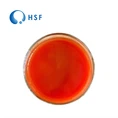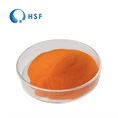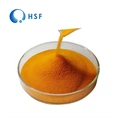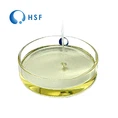What Is Isomalto-Oligosaccharides?
Isomalto-Oligosaccharides is a kind of prebiotic, which is the proliferation factor of Bifidobacterium beneficial bacteria in the human intestinal tract.
It can promote the reproduction of bifidobacteria in the human intestinal tract, thereby inhibiting the growth of various pathogenic bacteria, and reducing intestinal corruption and the production of toxins. It can maintain the balance of intestinal flora, increase vitamin content, and promote the reasonable absorption of various minerals and vitamins. It can also improve human immunity and prevent diseases such as cancer.
Why is Isomalto-Oligosaccharides Prebiotic?
1. It is not easy to be digested and hydrolyzed by the digestive enzymes in human saliva, gastric juice and small intestinal mucosa. Directly into the large intestine, the calories are extremely low, and very little is converted into fat, which will not cause obesity.
2. It does not rely on insulin, basically does not raise blood sugar and blood lipids, and can be eaten by diabetics.
3. Isomalto-oligosaccharide is a non-fermentable sugar and will not be utilized by tooth decay bacteria. Moreover, when isomaltooligosaccharide with isomaltose residues is used together with sucrose (isomaltose: sucrose ≥ 1), it can strongly inhibit the synthesis of insoluble glucan, thereby preventing the formation of tartar. Therefore, it plays a role in preventing dental caries in foods based on sucrose.
4. It is an indigestible oligosaccharide that can act as a water-soluble dietary fiber. Isomaltooligosaccharide is superior to general dietary fiber in many aspects, with mellow and soft sweetness, low sweetness and good taste.
5. It can promote the digestion and absorption of food, maintain normal intestinal function, improve gastrointestinal flora and laxative effect.
Sources of Isomalto-Oligosaccharides?
The main raw material of isomaltooligosaccharide is corn starch. In nature, isomaltooligosaccharide rarely exists in a free state. As a component of amylopectin or polysaccharide, it exists in a small amount in some fermented foods, such as soy sauce, rice wine or glucose syrup.






